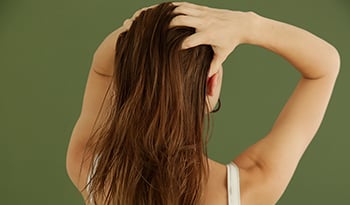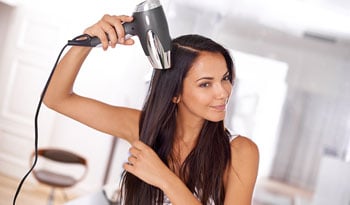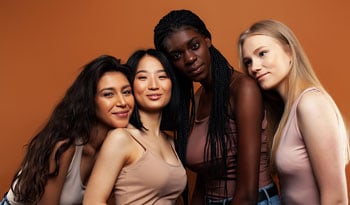Ultimate Hair Care Routine For Healthy Hair (Dermatologist-Approved)

Key Takeaways
- Know Your Type: A successful hair care routine starts with understanding your hair type (straight, wavy, curly, coily) and texture (fine, medium, coarse).
- The 6 Core Steps: A complete routine includes six essential steps: Cleanse, Condition, Treat, Protect, Moisturize + Style, and Maintain.
- Consistency Is Key: Just like skincare, your hair thrives on a consistent, well-structured routine to maintain its strength, shine, and health.
- Health Starts Within: A balanced diet rich in nutrients like protein, iron, and omega-3s is crucial for growing strong, resilient hair.
Why You Need A Hair Care Routine
As a dermatologist, I often remind patients that — just like skin — your hair thrives on consistency. A well-structured hair care routine forms the foundation for maintaining strong, shiny, and resilient strands. Whether you’re searching for the best hair treatment for damaged hair, a simple regimen to encourage growth, or the right products for your unique hair type, this comprehensive guide will walk you through every step.
You’ll learn the six essential steps of a healthy hair routine, how to avoid common mistakes, and which ingredients and products work best for your goals. By the end, you’ll have the tools to build a routine that fits seamlessly into your lifestyle and keeps your hair at its healthiest.
Understanding Your Hair Type + Needs
Before diving into hair care products and treatments, it’s crucial to understand your hair type and texture. Just as you wouldn’t use the same skincare for oily and dry skin, your hair requires a customized approach.
What Hair Type Are You?
The four main hair types are:
- Straight: Tends to be shinier but more prone to oil buildup
- Wavy: Often struggles with both frizz and dryness
- Curly: Naturally drier due to its spiral structure, which makes it harder for oils to travel down the hair shaft
- Coily/kinky: The most fragile type, requiring intense hydration and extra care to prevent breakage
What Is Your Hair Texture Like?
Your hair’s texture may be:
- Fine: Easily weighed down by heavy products
- Medium: More adaptable to different routines
- Thick/Coarse: Can handle richer, more nourishing products
Common Hair Care Concerns
Common concerns for each hair type include:
- Straight hair → Oily scalp and limp strands
- Curly/coily hair → Dryness, frizz, and tangles
- Chemically processed hair → Damage, brittleness, and split ends
- All types → Thinning or shedding over time
Remember, hair health isn’t just topical — it starts from within. Getting the right nutrients through a balanced diet is crucial for maintaining healthy locks. Nutrients like protein, iron, vitamins A, C, and D, biotin, and omega-3 fatty acids all play essential roles in growing strong, resilient hair. If your diet is lacking, targeted supplements for hair health may help fill the gap.
6-Step Healthy Hair Care Routine
A consistent hair treatment routine goes beyond just shampoo and conditioner. These six steps build the foundation for scalp health, strength, and long-term growth.
Step 1: Cleanse (Shampooing)
The essential first step in healthy hair care, cleansing removes dirt, oil, product buildup, and environmental pollutants while maintaining scalp balance.
How often you should cleanse depends on your hair type:
- Straight/oily: Daily or every other day
- Wavy: Two to three times weekly
- Curly/coily: Once a week or less
To cleanse properly, focus the shampoo on your scalp and roots, where oil tends to accumulate. Always rinse with lukewarm water (hot water strips your hair of essential oils).
Choosing the right shampoo is imperative for proper cleansing. These options offer varying targeted benefits:
- Clarifying shampoos: Use monthly to reset scalp buildup
- Sulfate-free shampoos: Gentle, less stripping
- Growth-stimulating shampoos: Choose one with caffeine, peppermint, or biotin, like California Gold Nutrition Strengthening Shampoo
Step 2: Condition
Conditioning your hair replenishes moisture, reduces friction when brushing, and protects strands from damage. Different types of conditioners are available, depending on your hair’s needs:
- Rinse-out: Use daily to restore softness
- Leave-in: Adds long-lasting hydration and frizz control
- Deep conditioners: Use weekly for intensive nourishment
Apply conditioner from mid-lengths to the ends, avoiding roots if you have fine or oily hair.
Step 3: Treat (Weekly/Bi-weekly)
This step is where targeted care comes in. You may benefit from using one or more of these hair treatments, depending on your hair type:
- Hair masks: Offer deep hydration and repair
- Scalp treatments: Look for those containing rosemary, tea tree, or peppermint oil to stimulate circulation and growth
- Protein treatments: Good for strengthening weak, brittle strands
- Oil treatments: Castor and argan oil deeply nourish the scalp and ends
Treat your hair to targeted treatments once or twice weekly, depending on your hair’s needs.
Step 4: Protect
Hair damage often happens silently without you realizing it before it’s too late. So, prevention is key. Take steps to protect against these common sources of hair damage:
- Heat protection: Use sprays or creams before blow-drying, curling, or straightening (protects up to 450°F)
- UV protection: Especially important for color-treated or fine hair exposed to the sun
- Overnight protection: Sleep on silk pillowcases or loosely braid hair to prevent tangles and breakage
Step 5: Moisturize + Style
Locking in hydration with leave-in treatments and hair serums improves manageability and overall appearance. When you’re ready for styling, choose the best products for your hair type:
- Mousse: Lightweight volume for fine hair
- Creams: Moisture and definition for curly/thick hair
- Gels: Long-lasting hold and frizz control
Step 6: Healthy Hair Maintenance
Think of this step as your “long game” for hair wellness. Incorporate these healthy hair habits to grow and maintain beautiful hair:
- Trims: Every six to eight weeks to prevent split ends
- Scalp massages: Just 5 minutes daily with a targeted scalp oil can boost circulation and encourage growth
- Gentle detangling: Use a wide-tooth comb on wet hair, or a soft-bristle brush on dry hair for gentle detangling
- Supplements: Consider biotin, collagen, or vitamin blends for hair strength
Routines By Hair Type
Sample weekly hair care routines at a glance
Straight/Oily | Wavy | Curly | |
|---|---|---|---|
Cleanse | Every 1-2 days | 2-3 x weekly | 1-2 x weekly |
Condition | Daily (ends only) | Every wash day | Every wash day |
Treat | 1-2 x monthly | 1 x weekly | 1-2 x weekly |
Protect | As needed | As needed | As needed |
Style | Lightweight mousse | Frizz-control cream | Moisturizing cream/gel |
Common Hair Care Mistakes To Avoid
Even with the right products, small mistakes in your daily routine can undo progress, resulting in damaged hair. Avoid these common hair care pitfalls:
- Using very hot water
- Over- or under-washing
- Brushing wet hair (except for curly/coily types)
- Skipping heat protection
- Overloading products
- Wearing excessively tight hairstyles
- Ignoring regular trims
- Rough towel-drying (opt for microfiber towels instead)
Building Your Personalized Hair Care Schedule
No two routines are identical. Your hair care schedule should reflect your hair’s specific needs as well as lifestyle factors that affect your hair health. When creating a personalized hair care schedule, consider your:
- Lifestyle: Do you work out daily? That may increase your need for cleansing.
- Climate: Individuals living in humid areas may require frizz control, while those in dry climates need extra hydration.
- Season: Regardless of where you live, you may need to adjust your haircare routine seasonally — using heavier products in winter and lighter ones in summer.
- Hair goals: Are you aiming for growth, repair, or simply maintenance? Your product choices should reflect your hair goals.
Start simple with shampoo, conditioner, and one styling product. Then layer in treatments and oils as your routine becomes consistent and you become more familiar with your hair’s needs.
Essential Hair Care Products Shopping List
When shopping for hair care products, it’s important to know which items are must-haves for every routine and which are nice add-ons. Stock your bathroom cabinet with these basics that should be included in every hair care routine:
Beyond the essentials, these advanced additions help address your hair’s unique needs:
- Hair mask
- Scalp treatment
- Protein treatment
- Wide-tooth comb
- Microfiber towel
Best Hair Treatment Products
Every hair concern has a solution with the proper treatment. Choose treatment products tailored to your hair’s special needs:
- Damaged hair: Choose bond-building treatments and products that promote protein-moisture balance
- Color-treated hair: Use color-safe formulas and extend wash cycles to preserve vibrancy.
- Dry hair: Choose rich, emollient conditioners and nourishing oils.
Natural Hair Care Ingredients To Look For
When choosing high-quality, natural hair care products, look to the ingredients list for research-based ingredients that work.
If moisturizing dry hair is your goal, look for emollient ingredients like argan oil, coconut oil, or shea butter.1,2 For hair strengthening, choose products with keratin, biotin, or collagen.3 For soothing damaged hair, look for aloe vera, chamomile, or tea tree oil.
Start Your Healthy Hair Journey Today
Healthy, beautiful hair doesn’t come from expensive treatments or overnight fixes—it comes from a consistent, personalized routine. By following the six essential steps — cleanse, condition, treat, protect, style, and maintain — you’ll create the best hair care routine for lasting results.
Ready to transform your hair? Explore iHerb’s hair care collection to find the right products to match your hair type, lifestyle, and goals.
References:
- Kaushik V, Kumar A, Gosvami NN, Gode V, Mhaskar S, Kamath Y. Benefit of coconut-based hair oil via hair porosity quantification. Int J Cosmet Sci. 2022;44(3):289-298.
- Serrafi A, Chegdani F, Bennis F, Kepinska M. The Importance of Argan Oil in Medicine and Cosmetology. Nutrients. 2024;16(20):3573.
- González Fernández D, Duchi S, Fernández Gómez L, et al. The Clinical Evaluation of Serum WS Biotin, a Novel Encapsulated Form of D-Biotin With Improved Water Solubility, for Anti-Hair Shedding Applications. A Prospective Single-Arm, Nonrandomized, Pretest-Posttest Study. Health Sci Rep. 2025;8(5).
ANSVARSFRISKRIVNING:Denna Wellness Hub avser inte att tillhandahålla diagnos ...













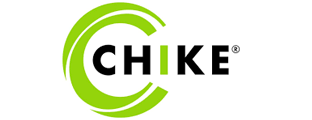

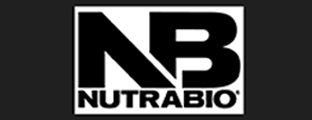













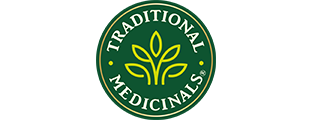








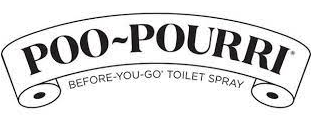


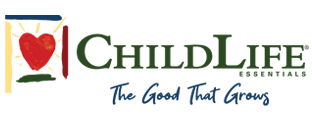

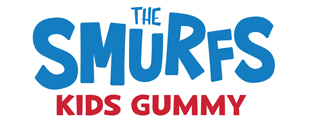

































 Innehållsförteckning
Innehållsförteckning











